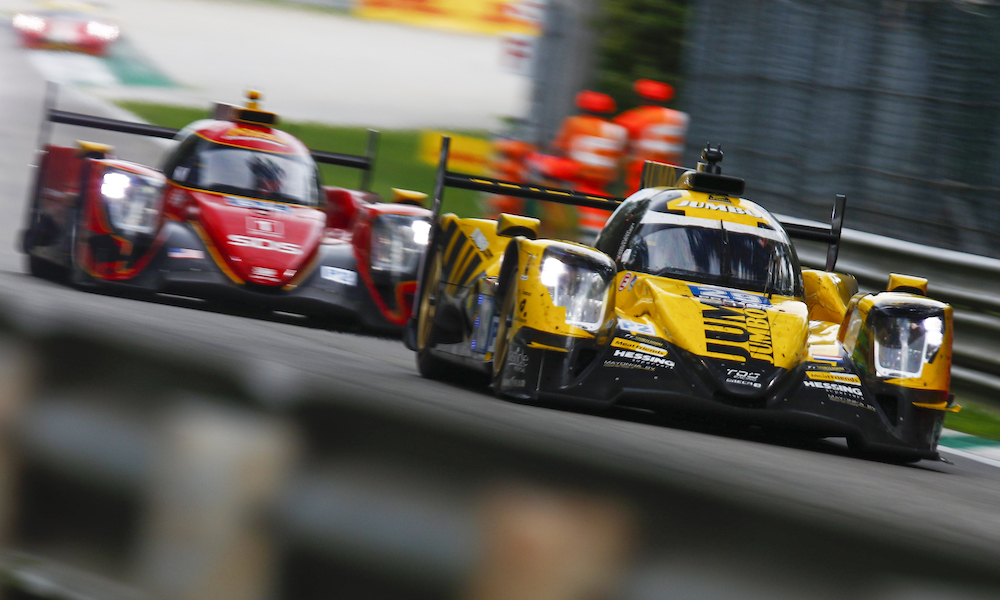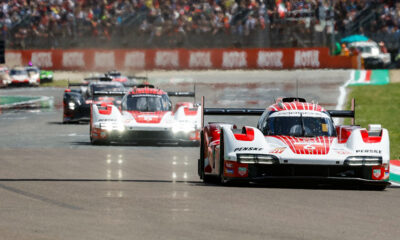The extension of the current LMP2 regulations through to the end of 2023 was done “for the good of the category” according to the FIA’s Director of Sport and Touring Cars.
Marek Nawarecki, who oversees the FIA’s operations in the World Endurance Championship alongside the Automobile Club de l’Ouest, has explained the background to adding another year onto the LMP2 rules that came into effect at the start of 2017.
The extension, which was recently confirmed by the FIA World Motor Sport Council, has consequently delayed the arrival of next-generation LMP2 cars to 2024 and means that current LMP2s will share the track with LMDh machinery for one full season in 2023.
The current LMP2s will also exist underneath the Le Mans Hypercar formula for an additional third year, which will be the first year of convergence between LMH and LMDh.
LMDh cars are being developed by the next-generation LMP2 constructors in tailored partnerships with road car brands such as Porsche, Audi, BMW and Acura. The new breed of second-tier prototypes will then arise after those LMDh projects are launched.
LMP2 will continue to involve private teams, as is currently the case in the WEC, the European and Asian Le Mans Series and the IMSA WeatherTech SportsCar Championship.
“The LMP2 teams need to have a clear view on the middle term,” Nawarecki told Sportscar365 during a meeting with members of the press at Monza last weekend.
“They need to know what is the term of the current LMP2 regulations and whether to continue the program to sell projects and so on.
“With the first approach we had for the new regulations of LMP2 cars, we set conditions for the category which are about the performance and cost, obviously.
“With the first approach we had, we thought it would be too early to switch to another category in the initial term that was set for the LMP2 project.
“I would say to have a safe approach for this category we decided to extend it. We continue to work on the new set of technical regulations.”
Building on a policy established for the 2017 rules, four constructors will be permitted to make cars for the next-gen LMP2 regulations. ORECA, Ligier, Multimatic and Dallara were named as the suppliers back in January 2020, when LMDh was first revealed.
It is understood that a single aerodynamic configuration will be mandated as a cost-savings measure. A dedicated engine supplier has not been chosen or confirmed.
Gibson currently provides all LMP2 engines, while Nawarecki indicated that a tender process will be opened to determine which company will hold that role from 2024.
“We are now working to define the schedule for this,” he said. “I cannot give a precise date.”
Nawarecki suggested that the delay in rolling out next-gen LMP2 will give teams and other involved parties the necessary time to prepare for the category’s refresh, rather than hitting them with high costs next year in time for a 2023 uptake of new machinery.
“We need to treat the story properly and obviously we have existing chassis and existing cars and spares,” he said. “To switch to another one for the first year is a big investment for everybody.
“It’s a big effort from the suppliers to supply parts. It’s a big effort from the teams. We’ve done it for the good of the category, which is quite successful.”
Asked if the coronavirus pandemic contributed to the decision to adjust the LMP2 timeline, Nawarecki said: “We have a lot of stakeholders in this category.
“We have teams, constructors of the chassis, suppliers. So obviously when you start a process like this you have feedback from all of these people.
“We felt it was not a correct time to do it.
“I would not say directly if it’s a COVID situation or not because each party has his own constraints and so on. But we decided it was the best fit [to delay].”
Tweak Gives “One More Year” to Analyze Performance
The ACO’s director of competition, Thierry Bouvet, has said that extending the current LMP2 regulations by one year will give his organization and the FIA the necessary time to establish where the 2024 cars will sit in terms of performance, and how that is achieved.
Current LMP2s have been slowed for the 2021 WEC season to cater for the introduction of Le Mans Hypercar, which is significantly slower than its LMP1 predecessor.
An important objective will be to ensure next-gen LMP2 cars are adequately slower in their original form than the balanced LMH and LMDh formulas, whilst also being sufficiently quicker than the top GT class and LMP3, all for sporting and safety reasons.
“As we have one more year of LMP2, we will also use the benefit of having one more year to analyze,” said Bouvet during the same meeting.
“We can use the benefit of having a complete WEC season to look at the stratification between Hypercar and LMP2.
“[At] some tracks it’s closer, some tracks it’s bigger. Here [at Monza] it’s a bigger gap. We need to have a global view before being able to answer this question.”
Bouvet also said that further stratification-based performance adjustments to the LMP2 class for the 2023 season upon the arrival of LMDh are “not planned.”
The WEC confirmed in April that further performance changes would not be made during the current season after the minimum weight was raised by 20 kg and the maximum power output was reduced by 50 kW from the original 450 kW (600 hp) figure.
“After this whole season we’ll have a lot more data and more visibility on the stratification of all the tracks,” said Bouvet.























